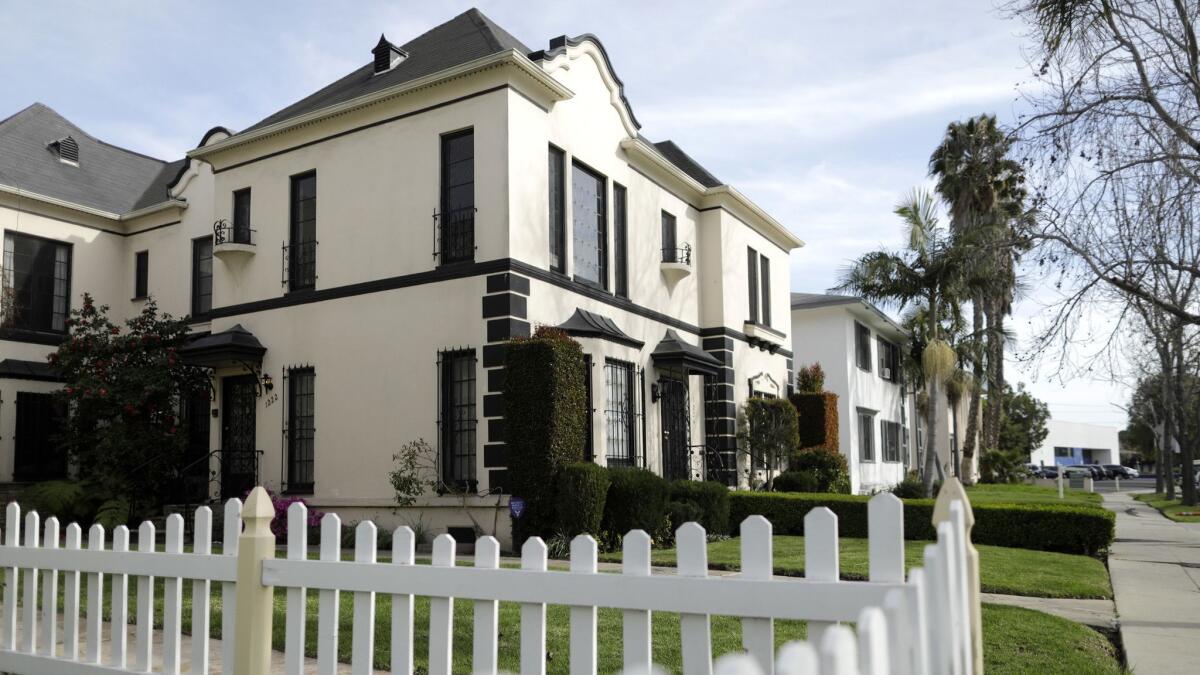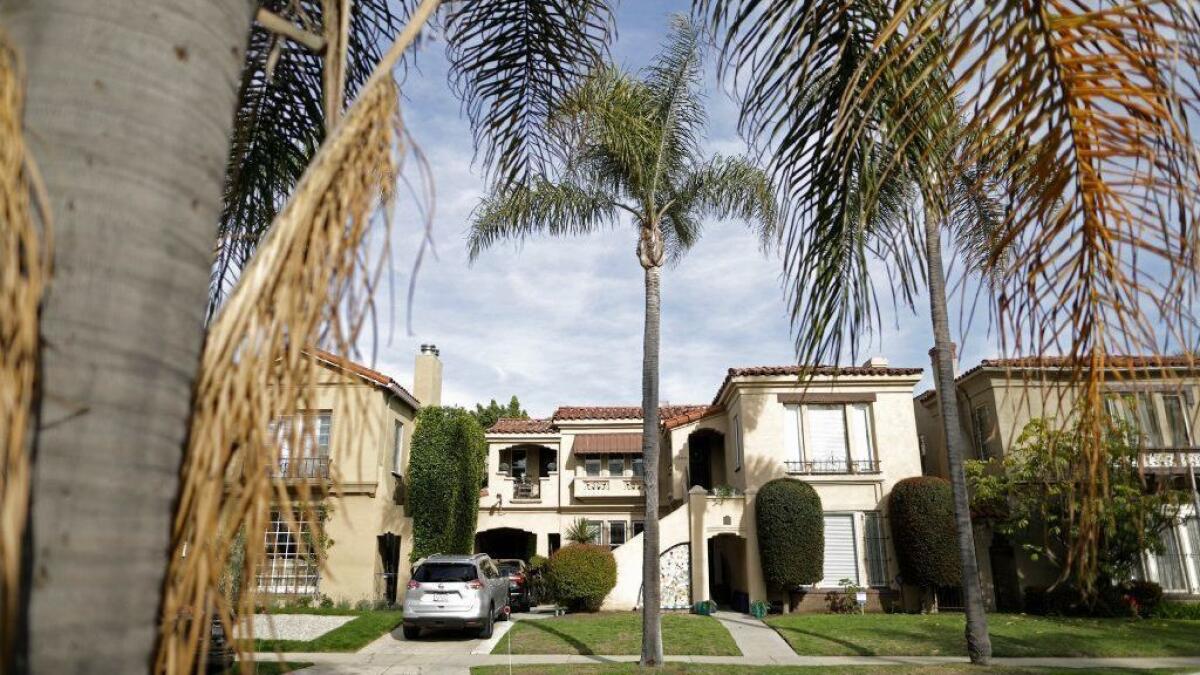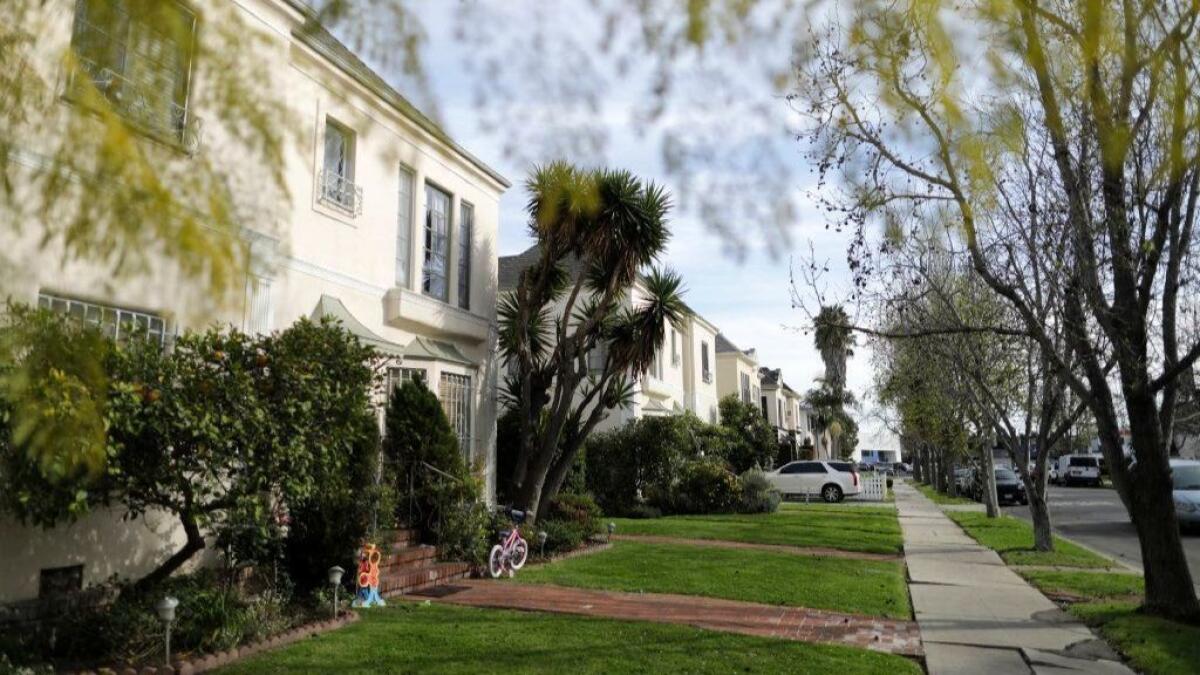A little-known bill could reshape housing development across California

- Share via
Reporting from Sacramento — A Bay Area lawmaker’s housing proposal could expand the size and scope of home building efforts in California at an unprecedented scale.
The legislation, Senate Bill 828, from state Sen. Scott Wiener (D-San Francisco), would require cities and counties to rezone land in their communities to permit many more homes than are currently in their plans.
Under the bill, local governments could have to double the amount of land made available for condominium and apartment complexes, and zone even more parcels for residential development in an effort to address a shortage of homes in the state that Wiener has estimated stands at 4 million.
“The goal of all of my housing work is to lead to a lot more housing,” Wiener said.
Coverage of California politics »
Wiener wants to implement the new zoning through changes to the state’s housing supply law, which for the last 50 years has aimed to spur the construction of enough housing at all income levels to keep pace with California’s growth.
The law compels cities and counties to zone enough land in their communities to accommodate projected population increases, so theoretically developers have enough places to build. But numerous factors, including developers’ construction and financing costs, competing state environmental regulations and often lengthy approval processes for projects, have stalled actual production.
The state Department of Housing and Community Development has estimated that developers need to build 180,000 new homes a year simply to keep pace with California’s population growth. Yet that number has been reached only three times in the last 27 years, according to statistics from the state construction industry, leading to a shortage particularly in the Bay Area and Los Angeles, where recent strong job growth has led to booming demand.
The existing housing supply law says local governments must plan to have enough land zoned for residential construction to meet housing production goals across a range of income levels. The state resets the numbers and reallocates the targets to local governments every eight years.
Wiener’s bill would increase the number of homes that cities and counties have to plan for in several ways:
- Doubling the amount of land intended to house very low- and low-income residents by setting aside more properties for apartments and condominiums.
- Zoning land to account for homes not built under production goals from the prior eight years.
- Zoning even more land for residential properties if a state audit shows there’s a shortage in that community.
- Boosting targets higher where home prices are far outpacing wage increases.
Wiener declined to estimate how many more homes he expects SB 828 to produce, but the effects could be substantial.
Another bill from Wiener, SB 827, would raise height limits near transit stops and has attracted national attention for the large increases in housing densities it would allow in San Francisco, Los Angeles and other areas of the state ringed with mass transit.
By contrast, SB 828 has garnered less interest because its changes are harder to understand and predict, said Greg Morrow, director of the Fred Sands Institute of Real Estate at Pepperdine University. But Morrow said SB 828’s increases to allowable zoning for housing across the state could be as dramatic as those anticipated by Wiener’s other bill.
“Could it be just as impactful?” Morrow said. “I think so.”

The housing supply law has had a troubled history, with local governments resenting, sidestepping and, at times, ignoring it. In turn, the state has layered planning requirement after planning requirement into the law. The entire process, former state housing director Timothy Coyle said, has turned into “an energy- and money-guzzling bureaucratic maze” that hasn’t resulted in the building needed to keep pace with California’s growth.
Just two of 539 cities and counties met housing production goals at all four income levels during the eight-year period that ended in 2014, according to a Times review of housing department data.
The figures aren’t much better now, even though the housing market is much stronger than it was during the recession. More than 98% of local governments are off track in meeting their current goals, according to a recent housing department report. Some of the 11 cities and counties that are on pace are doing so for reasons other than welcoming growth.
Beverly Hills is meeting its target because the city was allocated just three new homes. The more than 500 new homes built in Foster City, a Bay Area bedroom community, were approved at least six years ago and are just coming on the market now. A city councilman there has called the entire housing supply law process “an elaborate shell game.”
Regional agencies, including the Southern California Assn. of Governments in the Los Angeles area, serve as the clearinghouse for housing goals outlined by the state. Wiener’s bill would give the state more of a say in the numbers each city receives. So would Assembly Bill 1771 from Assemblyman Richard Bloom (D-Santa Monica), which also would allow outside groups to weigh in on the number of homes that should be built in each community.
“It’s an open secret that there’s a lot of political horse-trading that seems to override the actual objectives” of the housing supply law, said Anya Lawler, a policy advocate at the Western Center on Law & Poverty, a principal supporter of AB 1771.
Wiener’s and Bloom’s bills continue the Legislature’s recent push to use the housing supply law to make it harder for cities to say no to projects. Last year, Gov. Jerry Brown signed a law aiming to ensure cities zoned parcels of land that could best accommodate home building. Another new law, Senate Bill 35, forces cities that are behind on their housing goals to approve projects without delaying or requiring additional environmental review if developers set aside some units for low-income residents and abide by union wage standards.
Developers are already taking advantage of SB 35, also written by Wiener. In Cupertino, home to Apple, a developer has announced plans to use the law to gain approval of about 2,400 new homes, with half reserved for low-income residents, to help redevelop a mall into offices and homes.
But there are concerns that forcing cities and counties to set aside additional land for housing won’t necessarily result in more construction and could be counterproductive.
Cities don’t build houses, and without a substantial increase in state dollars to help finance low-income housing projects, local governments can’t meet production goals in place now, let alone higher ones, said Jason Rhine, who works on housing legislation at the League of California Cities.
“It’s moving the goalposts even further away from us,” Rhine said.

Cities also receive less tax revenue from residential developments than commercial and hotel projects, and reserving a larger percentage of land for housing would squeeze local budgets, he said.
Worries about overly ambitious housing goals aren’t just coming from local governments. Ben Metcalf, director of the state Department of Housing and Community Development, said setting production targets that would account for the entire backlog of needed homes “runs the risk of being so unattainable as to induce us all to a state of helplessness.”
“We need to push and we need to make sure we’re bringing cities along on the journey to the greatest extent possible at the state” level, said Metcalf, who has not taken a position on the bill. “But there is also a risk of overreach.”
Wiener said that he understands the risks of making the housing goals too aggressive but that the state has to do more than it is now.
“We are working to create a shift to show how much of hole we’re in with respect to the production of housing,” he said.
SB 828 is scheduled for a hearing in the Senate Transportation and Housing Committee on April 24.
More to Read
Get the L.A. Times Politics newsletter
Deeply reported insights into legislation, politics and policy from Sacramento, Washington and beyond. In your inbox twice per week.
You may occasionally receive promotional content from the Los Angeles Times.











